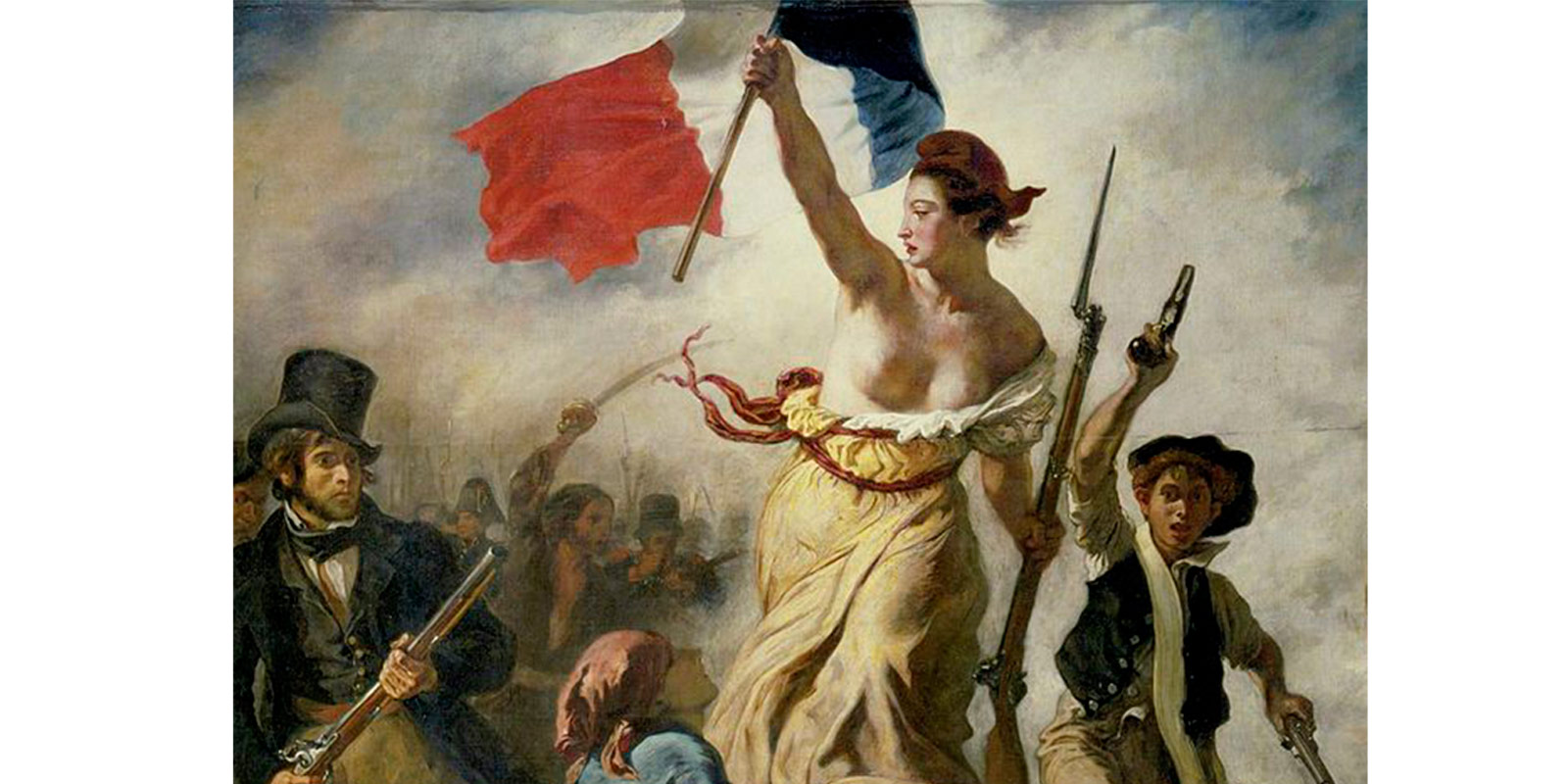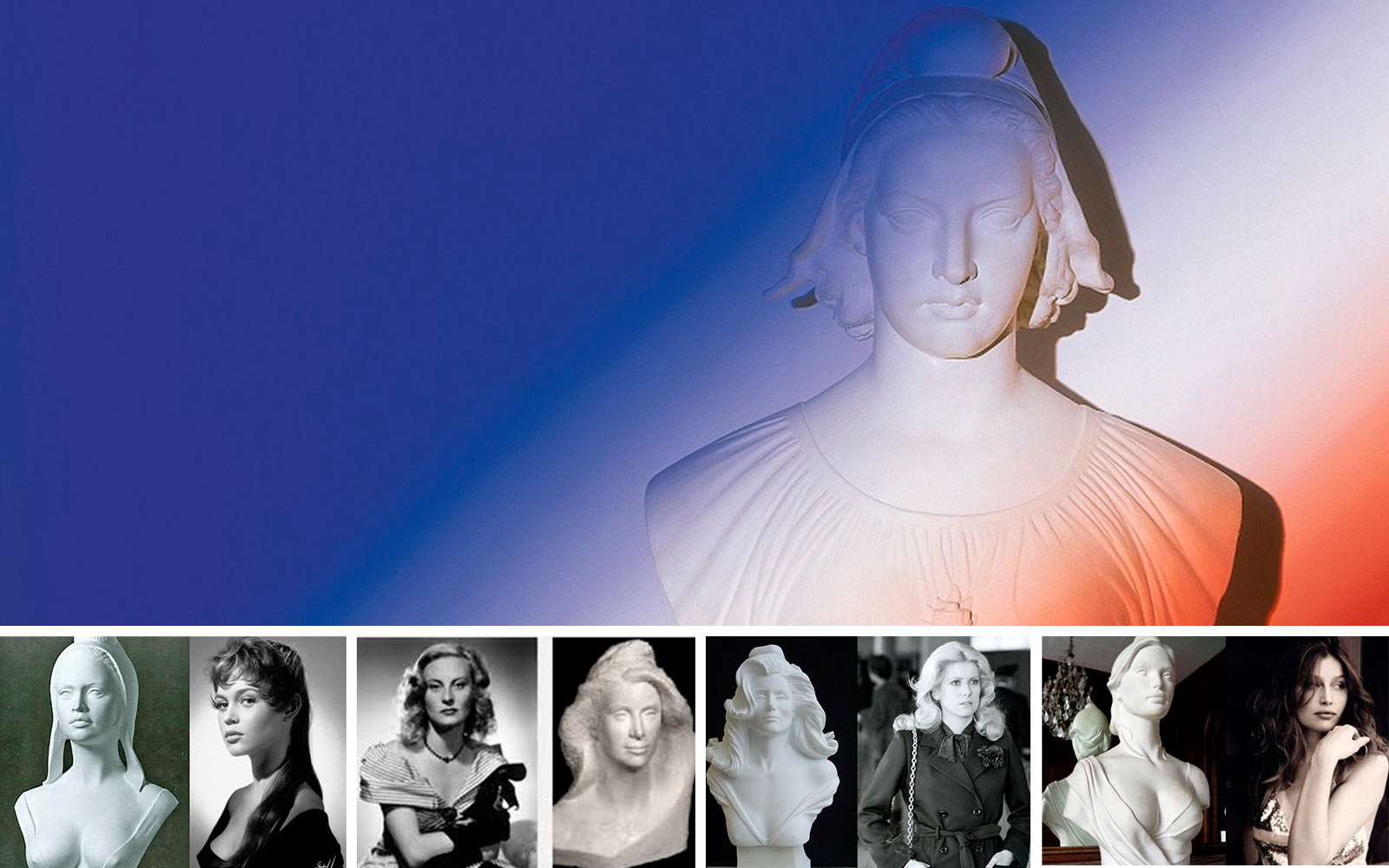Marianne is a french national icon. She has been in the nation's eyes since the French Revolution in 1789. She was the carer and saviour for the people rising up against the monarchy, inspiring and guiding them to continue the fight for liberty, equality and fraternity.

Marianne is a symbol of freedom.
Marianne is a woman of the people. Her name is a combination of the two most popular female names at the time, Marie and Anne.

Marianne is a strong woman, depicted with bare breast to show her beauty and symbolise her nurturing of the population and the national spirit. She is an emancipated woman at the head of society and her red bonnet is a Phrygian cap, aka a 'Liberty cap'.

Marianne has been on French stamps since 1849. Post-war premieres from Charles de Gaulle onwards have adopted her placement on the national stamp as a matter of presidential responsibility. It's a populist tactic to galvanize a nation and win votes.

A bust of Marianne is in every town hall and court house around the country, in various different forms and moulds, all of which are styled on the original.

Since 1969 Marianne has taken on the features of famous women such as Brigitte Bardot, Catherine Deneuve, and most recently Sophie Marceau and Laetitia Casta.

Marianne stands in the Place de la Republique on the border between the 3rd, 10th and 11th arrondissements in Paris. She holds an olive branch aloft in the air at the centre of a large square which, fittingly, has been redeveloped as a space for Parisians to enjoy freely.

Marianne adorns the Special Edition Francine Bastille, in a unique design that pays hommage to the face of the French Republic.

